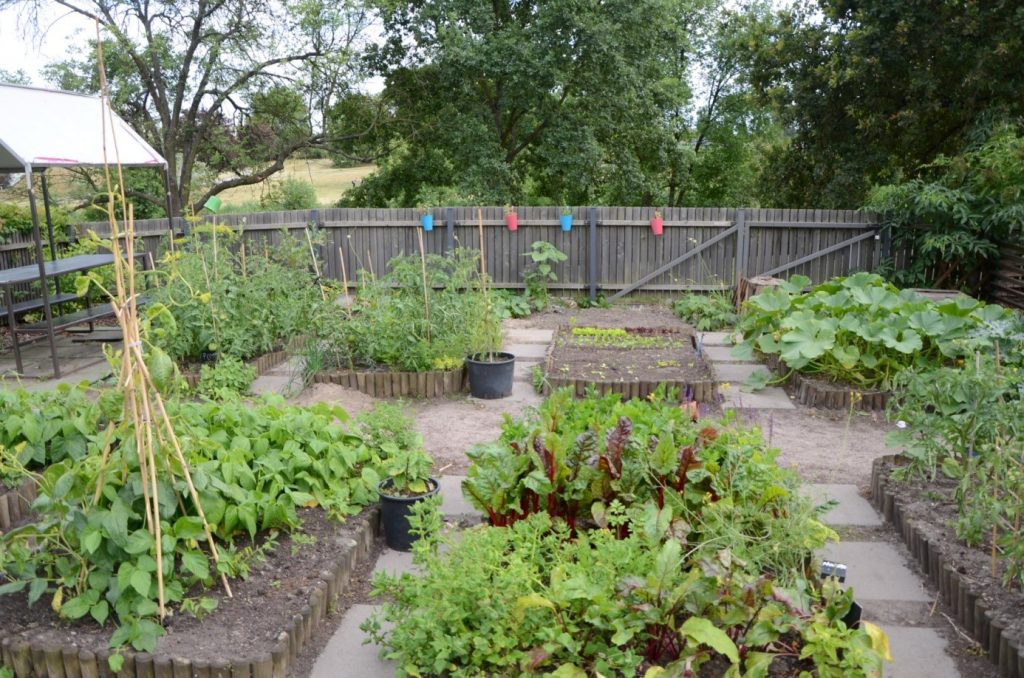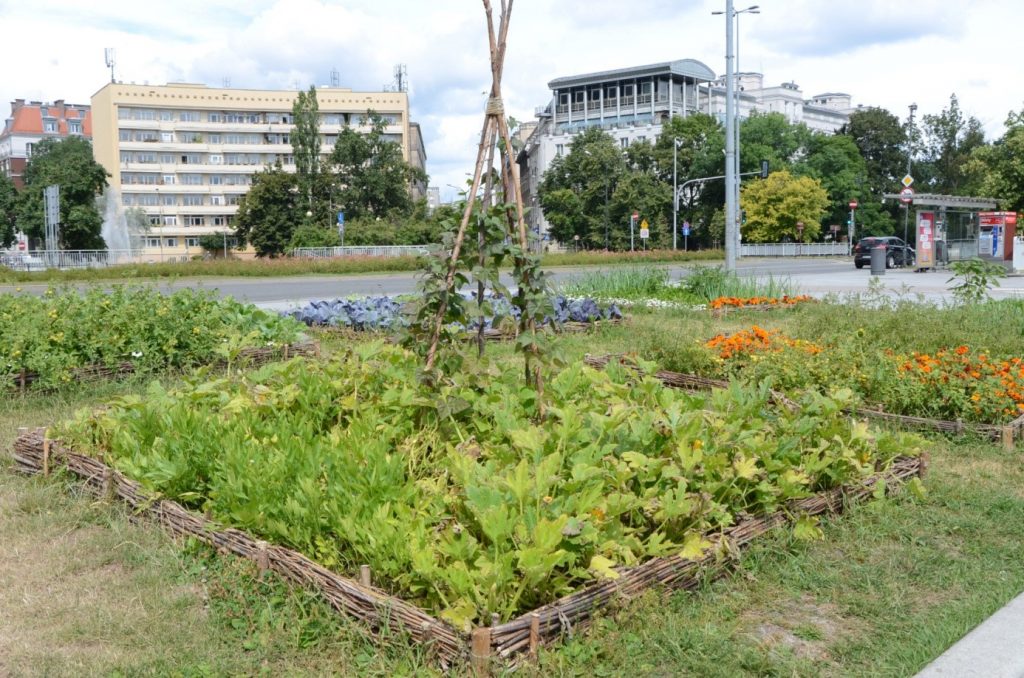Community gardens are small spaces intended for the integration of local communities in urban areas. They are made up of two parts: one of them is intended for growing vegetables and fruit, the other is a place for joint meetings or feasting. Often these gardens are combined with small playgrounds for children.
They are established as bottom-up initiatives, thanks to local communities or as top-down initiatives, at cultural centers, schools – they are organized by municipalities or city districts, etc. Community gardens can be accessed by anyone interested, and they are open to all residents.
Most initiatives of this type can be found in cities such as New York, Berlin or Paris. Also in Polish cities, they are more and more often established in housing estates or in the spaces of abandoned plots of the Family Allotment Gardens.
Environmental benefits: mitigation of surface water runoff, rainwater retention and infiltration, reduction of urban heat island, air purification, increase of biodiversity, creation of ecosystems.
Social benefits: new spaces for recreation, beneficial effects on mental and physical health of local communities, increasing the esthetics of the place, education of local communities, integration of local communities.
Economic benefits: production of food used by the local community.
They are part of creating green networks in the city:
– rain gardens, green walls, bioswales, swales.
Construction:
Community gardens are small, separated from the urban space with low fences, so as to encourage the local community to visit and work in them.
They consist of two parts:
- a) Cultivable.
Here there are beds with edible plants, vegetables, fruits and herbs. Beds in urban spaces are often raised, or made in crates or jute bags, because the urban soil is contaminated with heavy metals.
The beds are tended by people visiting the garden and the crops are distributed between them.
Additional components are: a composter, a water intake and a small storage room for tools.
- b) Recreational part
It should consist of a small clearing where a large table, fire pit and gazebo can be placed. Bread ovens are often built here, ornamental plants are planted. Various kinds of meetings are often held in the gardens. An important aspect is that these spaces have their coordinators / animators who motivate communities to use and care for the garden.
Examples:
A community garden at the Służewiec Community Center.


The garden was located at the “Służewiec” cultural center.
More about the garden at: https://www.facebook.com/wspolnyogrodsdk

“Motyka i Słońce” [“A Hoe and the Sun”] community garden – Ujazdów, Warsaw
The garden is located in the estate of the so-called “Finnish cottages” in the terrain of Ujazdów.
More about the garden at: https://www.facebook.com/motykaislonce
More on the topic in the publications:
http://bujnawarszawa.pl/ogrody/
http://www.foodsecuritynews.com/Publications/Community_Garden_Best_Practices_Toolkit.pdf
https://www.albertahealthservices.ca/assets/info/nutrition/if-nfs-community-gardens-handbook.pdf
https://www.funduszeeuropejskie.gov.pl/media/95443/9_wr_ogrodyspolecznee-book-1.pdf
